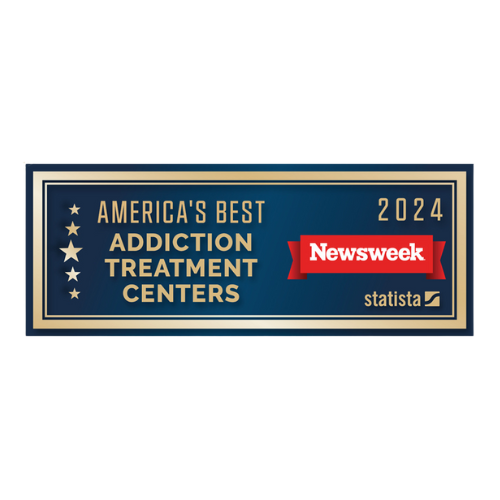Addiction recovery involves many external changes to daily life. Developing new routines and hobbies, changing social groups, and engaging in new therapeutic practices or experiences are all parts of exploring a transformed sober life. However, recovery involves just as many internal, personal changes. Learning more about oneself, how to identify stress, and even being more in touch with feelings and vulnerabilities are all part of an effective approach to overcoming addiction. Mindfulness practices help each person in recovery create this internal toolkit for change and healing. Effective mindfulness practices are also not limited to a person’s time treatment. Rather, continuing to practice mindfulness at home is an instrumental part of furthering each person’s sober goals at any stage of healing.
What Is Mindfulness?
Mindfulness is a term seen often throughout any recovery journey, whether a person is overcoming substance abuse, challenging the effects of mental health disorders, addressing trauma and PTSD, or overcoming a combination of these challenges in co-occurring disorders. It is a state of being aware of oneself, not just physically but also mentally situating oneself in the present time and place. Effective mindfulness practices can help a person identify changes in how they are feeling or thinking to identify stress, urges, cravings, triggers, and more, and put a person in control of these feelings. This connection between a person’s mind and body is also the basis of many other effective recovery techniques and new perspectives in recovery.
The Role of Mindfulness in Recovery
Mindfulness plays many roles in recovery, helping address challenging emotions, stress, triggers, and even the daily stresses of life outside of recovery. Some of its benefits include:
- Increased awareness of triggers and stress
- Improved ability to process stress safely, rather than falling back on self-destructive practices
- Allowing a person to situate themselves in the present moment rather than feel defined by guilt, past mistakes, or past identity before sobriety
- Informing and employing relapse-prevention strategies
- Improved emotional resilience
- Better quality of sleep
- Greater feeling of agency in navigating stresses, urges, and cravings in recovery
Mindfulness practices also do not push down common negative feelings like anxiety, fear, or stress but empower those in recovery to channel them healthily. This can be essential in reducing feelings of anxiety, depression, stress, cravings, and promoting improved emotional regulation. Those in recovery can also benefit from effective mindfulness practices by continuously looking at things in a new light, improving problem-solving skills and neuroplasticity, or the brain’s ability to adapt to new situations. Mindfulness can even improve self-awareness and become an essential tool in repairing relationships and exploring forgiveness in oneself by focusing on present change.
Finding Your Best Mindfulness Practices
Hawaii Island Recovery offers many opportunities to explore effective mindfulness practices throughout detox, residential, and outpatient programs. Exercises like meditation, yoga, nature walks, and more can be great ways to explore mindfulness in Hawaii and embrace its positive effects. However, there is never just one way to engage in mindfulness. Like all aspects of recovery, each person will have their own best strategies for connecting to their mind and body.
The opportunities and community of peers and professionals at Hawaii Island Recovery can empower each person to begin their healing journey by finding the best approach to their, needs, goals, and most effective mindfulness strategies. However, continuing to update these techniques after graduating from Hawaii Island Recovery’s treatment program and developing new methods to tackle stresses at home as an alumnus is all part of a sustainable recovery journey.
Practicing Mindfulness at Home
Effective mindfulness practices can be instrumental in navigating urges, cravings, stress, anxiety, and so much more. Even after graduating from a dedicated treatment program, urges and cravings are completely normal, but demand continued attention. Practicing mindfulness strategies at home daily can aid in relapse prevention, with regular use improving their overall effectiveness. While it is normal for some mindfulness practices to feel foreign at first, sticking with these techniques and giving each one a fair shot can empower each person to find the combinations of practices that work best for them.
Starting Mindfulness at Home With Breathing Techniques
One of the most common and effective mindfulness techniques is practicing mindful breathing. These breathing techniques can be used anywhere, making them great for navigating stress or reaching a state of physical and emotional calm regardless of where or when a person runs into unexpected stress. The 3-3-3 technique can be a great place to start mindful breathing, where a person inhales for three seconds, holds for three seconds, and exhales for three seconds.
This strategy forces a person to pay attention to their body by deliberately focusing on this breathing exercise, helping to identify physical changes that may indicate stress or anxiety. Likewise, it also ensures that a person does not act immediately or irrationally in the face of stress, instead giving a person time and prompting them to choose the best way to react to stress.
Practicing mindful breathing techniques while in a comfortable state can also ensure that they are ready to be used in times of stress. Effective mindfulness at home often begins by taking a moment each day to practice mindful breathing, such as in the mornings to situate oneself physically and emotionally for the day ahead.
Using Meditation at Home
Another common technique for practicing mindfulness at home is using daily meditation routines. Meditation can be a great tool for calming the body and mind by allowing a person to focus wholly on oneself. It can help reduce stress, improve spiritual health, help navigate cravings, or even prompt a person to take a moment to reflect and acknowledge their accomplishments of the day.
Meditating even for a few minutes each day can normalize the practice, even for those unsure of its benefits. For some, setting up a dedicated meditation space can train the body and mind to tune themselves to a new level of calm and make the most of meditation in recovery. A quiet corner of a room, using calming sounds or smells, and creating a physically comfortable environment can all help to add to this feeling of calm and introspection. However, while these efforts can be effective, they are not absolutely necessary, with many people finding success by meditating in their usual comfortable bed just before sleep or waking up in the morning.
Guided meditation apps can provide the support and direction to continue practicing mindfulness at home with guidance to ensure its efficacy in challenging stress, urges, cravings, and more. These apps can also be worked into otherwise busy schedules, helping each person ensure they are taking at least a few minutes each day to themselves and to focus on their recovery and wellbeing.
Blending Physical and Mental Mindfulness Practices
Mindfulness practices can also involve physical activity. This is most common in exercises like yoga or tai-chi but can be extended to include many different activities. Regular exercise routines can provide an opportunity for mindfulness as a person focuses on the movements of their body and how their body and mind are responding to the exercise. This deeper element of exercise can be just as impactful as exercise itself and can be a great tool for further reducing stress, improving physical and mental health, and more.
Blending physical activity and mindfulness can especially benefit those who may sit for a large portion of the day, such as at an office for work, or who may work remotely from home. Getting up and moving around, paying attention to the body and detaching from workplace stresses, and taking regular walks around the house or up and down stairs can all be great ways to promote healthy emotional regulation and identify stress throughout the day.
Incorporating Mindfulness at Home Through Routine Practices
While many people may dedicate time to specific mindfulness techniques, such as a part of morning routines or nighttime rituals, they can also be incorporated more sporadically throughout the day. It is even possible to practice mindfulness at home even while doing regular morning hygiene routines.
Focusing on the feeling of tile underfoot, the sensation of brushing teeth or combing hair, and even taking a moment to oneself in the shower to breathe and feel the water and steam can all be ways to be more in tune with a person’s own body, emotional state, and prepare for the day ahead. This can help each person regularly incorporate mindfulness at home even if they wouldn’t have time for other dedicated strategies on a particular morning.
Practicing Mindfulness at Home Through Journaling
Journals can be an amazing resource at any stage of recovery. For some, journaling daily events can be a great way of processing stress and challenges that may arise. Others may instead dedicate themselves to specific gratitude journals to focus on positivity, progress, and accomplishments in sobriety. However, journals are also an amazing opportunity to engage in mindfulness at home.
Journaling can be a very intimate experience, distancing oneself from outside stresses and instead setting up in a comfortable space. Feeling the movement of a pencil or pen, or even the clicks of a keyboard, can all be great ways of focusing on the fingertips and scanning the body. However, journaling also prompts the mind to think back on feelings and experiences of the day, helping to determine which memories may be sticking with a person, whether they are positive or negative, and any lingering effects of these experiences. This can create a tool that not only processes difficult emotions but also recognizes patterns of stress as well as acknowledges personal accomplishments or the efforts of supports in recovery.
Journals can also help a person track their journey in recovery from addiction, mental health disorders, trauma, and more by creating something to look back on. Seeing progress in motion, how a person overcame past challenges, and the myriad of milestones already reached can motivate a person to overcome new challenges that may manifest along the way.
Using Music to Your Advantage
Music is another great tool for navigating difficult challenges in recovery. For some, music can be a way to transport oneself to a particular time and place, evoking many different emotions. However, a love for new songs can also help to situate a person in the present. Music as a mindfulness technique can also cause a person to focus not just on how music may make them think but also on how the rhythm makes them feel. Faster or slower tempos can affect the mind and body in different ways, meaning music can either create a calming atmosphere or instill excitement when accomplishing tasks or reaching milestones.
Using music to process stress is another way of being more in tune with personal needs and goals. Whether a person is listening to calming music to lessen feelings of anxiety or is listening to hard rock or metal to channel stresses and expel them from the body, music can be an amazing resource for mindfulness by allowing a person to focus on how they feel and actively decide on how they want to process these feelings for a healthy approach to navigating stress, anxiety, depression, and more.
Incorporating Nature Into Your Mindfulness at Home
Nature is an amazing resource in recovery and is championed at Hawaii Island Recovery. Getting outside and going on nature walks, attending nature-based therapies and oceanic healing opportunities, and more all make up a unique and comprehensive approach to treatment at Hawaii Island Recovery. However, nature can be found anywhere, and finding ways to engage with nature while practicing mindfulness at home can help each person continue effective practices from their time in Hawaii.
Going on walks, opening windows in the warmer months to feel the breeze, or even making an effort to take a short walk during the limited daylight of winter can all be ways to get out of the house and focus on the wind, the warmth of the sun, or even the frigid air against skin to situate oneself in the present moment.
Hiking can provide small opportunities to explore how a person feels, from promoting spiritual health to prompting a person to focus on the crunching of leaves underfoot, the sound of rustling leaves or chirping birds, and more. These practices can all help to detach from stress and instead create a truly free atmosphere in recovery that can expel stress and guilt, or navigate urges and cravings.
Focus On Just One Thing
Those in recovery can benefit from having multiple different practiced strategies for mindfulness at home. However, that doesn’t mean that a person has to utilize them all at the same time. Rather, limiting multitasking at home can be a great way to promote healthy mindfulness throughout the day. This means not just focusing on one strategy at a time but also focusing on a single task or responsibility at any point. Breaking up the day’s responsibilities into parts, such as dividing laundry, dishes, workplace responsibilities, and more into different tasks can make the day more manageable.
Incorporating mindfulness strategies between these tasks can help each person identify which tasks or responsibilities may cause the most stress and which they find more relaxing. This can help develop a more robust understanding of stress, triggers, anxiety, and other challenges that a person may not otherwise be aware of throughout their recovery.
Making Changes
Like many other parts of recovery, effective mindfulness at home involves adapting to an evolving strategy. There is no single best practice, nor will all mindfulness strategies be similarly effective for each person. Being open to trying new practices, or making adjustments to mindfulness strategies that may be less effective, can empower each person to personalize their recovery and take agency in their healing journey at any stage, even after graduating from a dedicated treatment program.
Hawaii Island Recovery is always available to help each person make these changes, whether by calling us at any time or continuing to engage in outpatient treatment programs to share ideas with peers and professionals alike to find new strategies throughout each person’s continued healing journey.
Healing from addiction, trauma, mental health disorders, or a combination thereof is complicated, and there is never a single journey to a healthier future. However, effective mindfulness practices can help you better recognize stress and changes to engage in effective healing, employ coping skills, and feel in control of your thoughts and actions. At Hawaii Island Recovery, we understand the benefits of mindfulness and can help you explore mindfulness practices that work best for you, from individualized exercises to group experiences and healing opportunities. No two journeys overcoming any kind of challenges will be the same, and mindfulness is a way to connect you with your own best practices and efforts. For more information, call (866) 390-5070.
 Hawaii Island Recovery
Hawaii Island Recovery 






